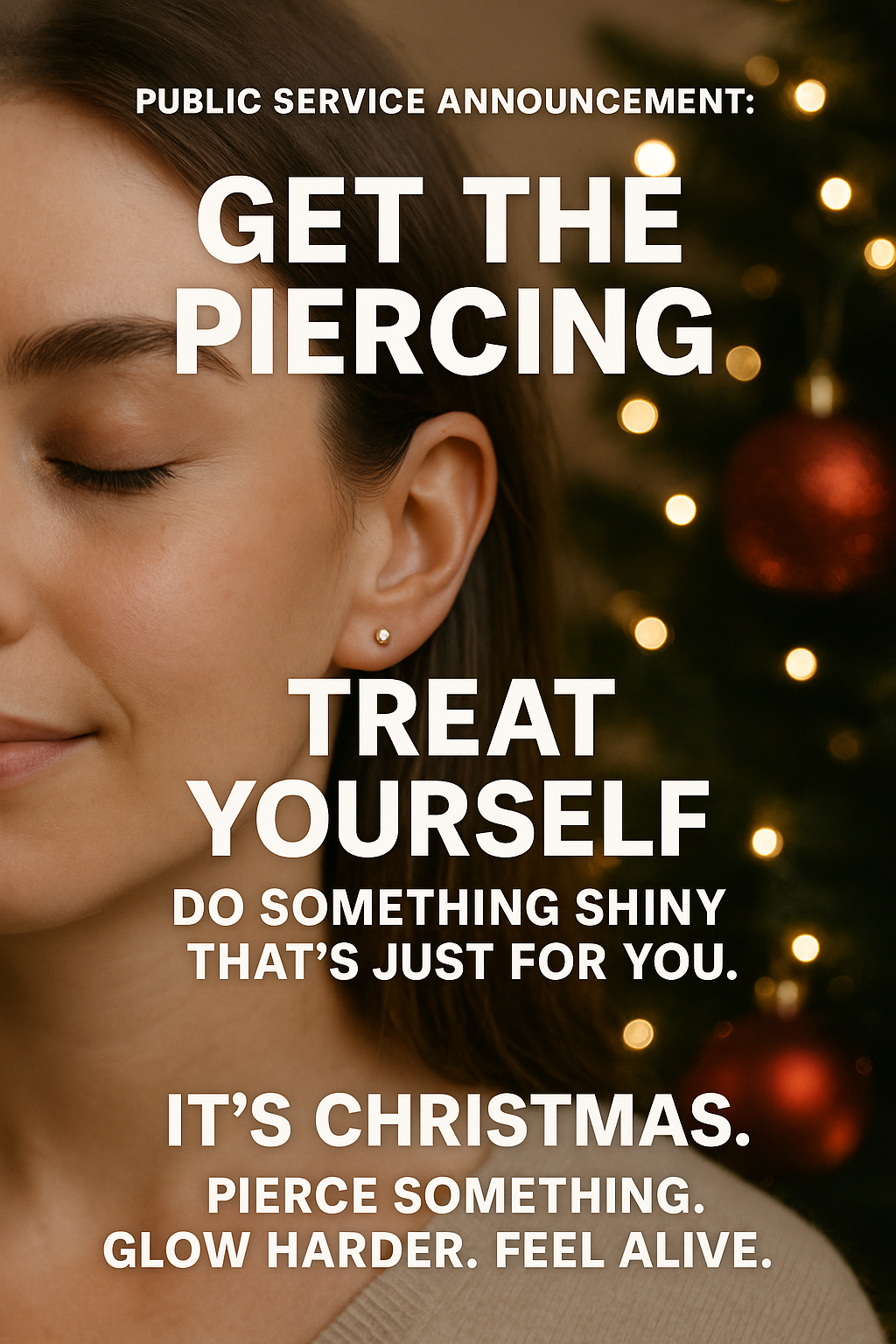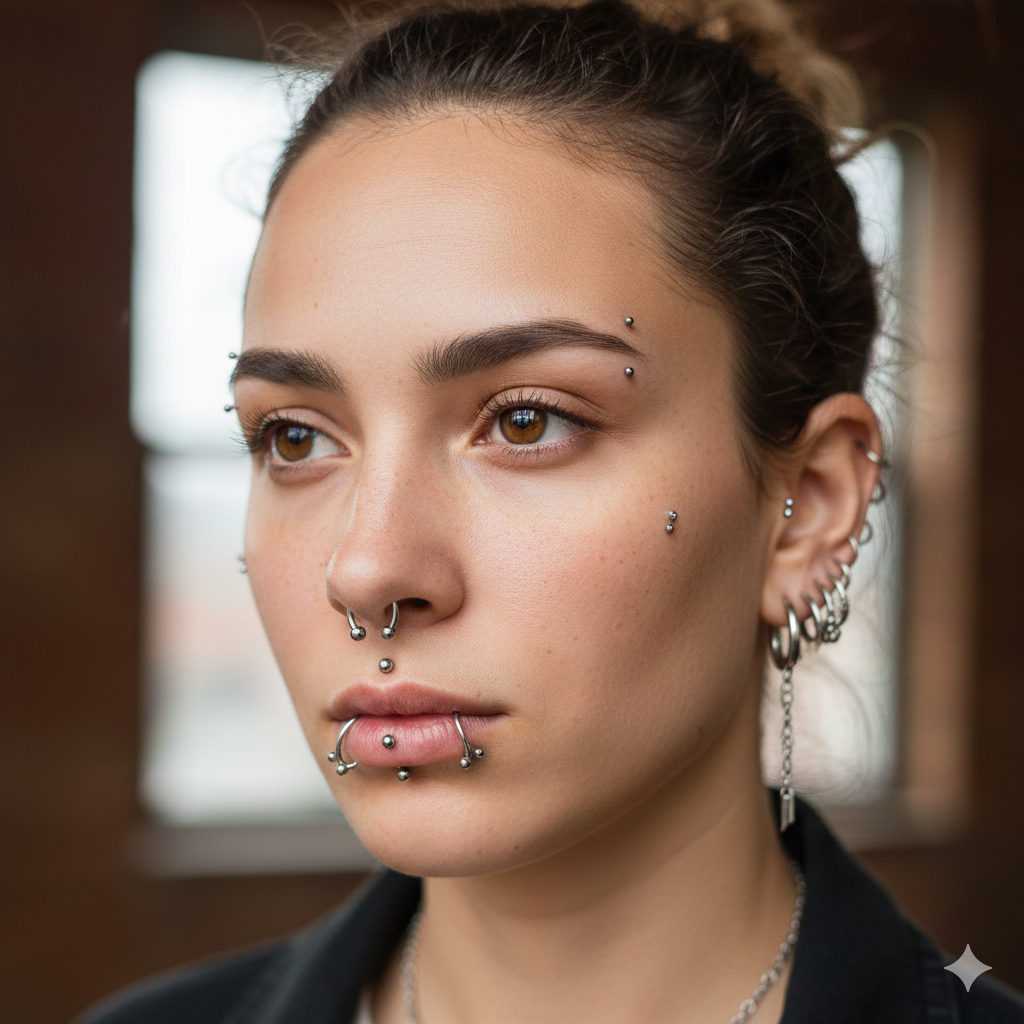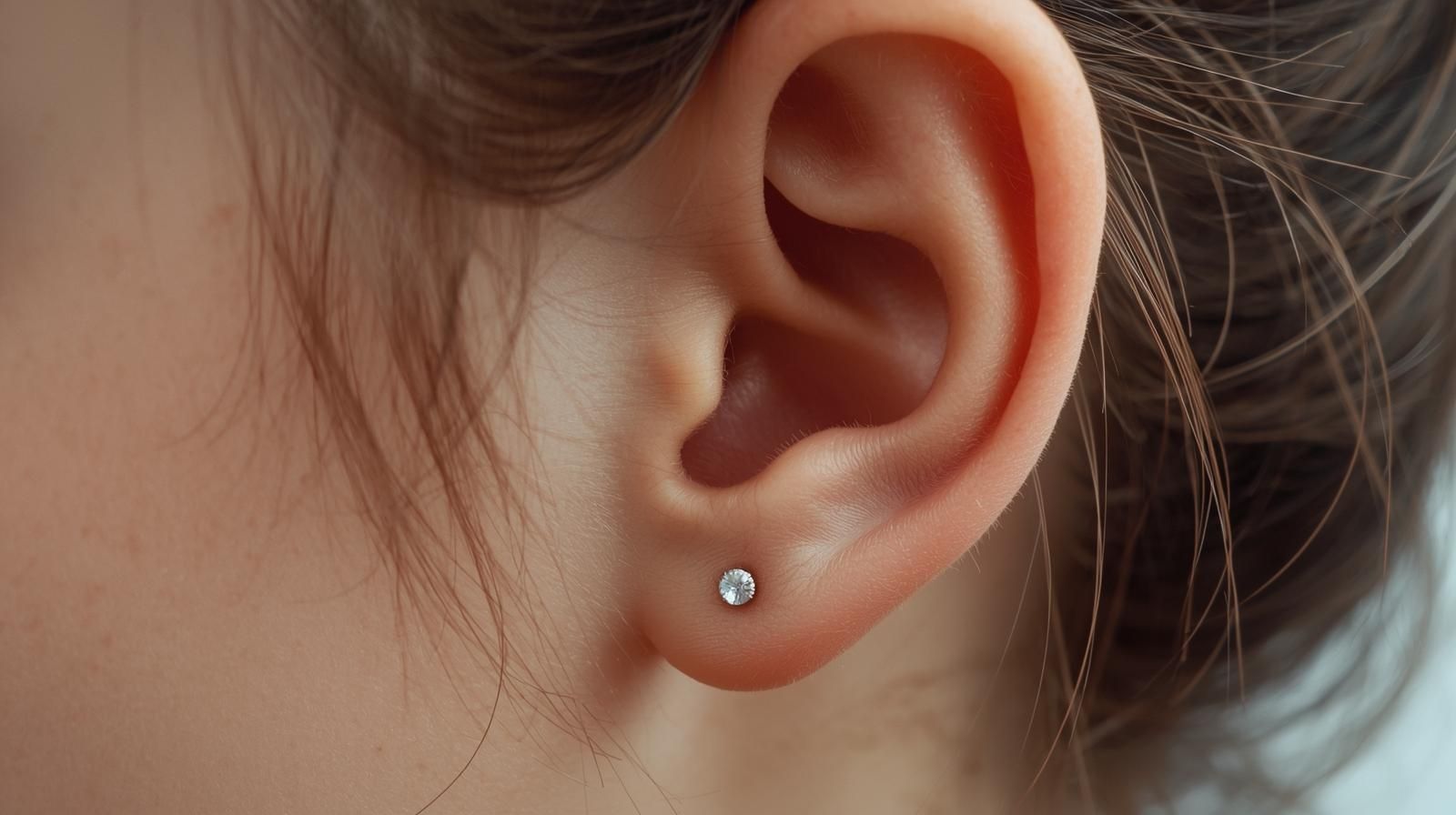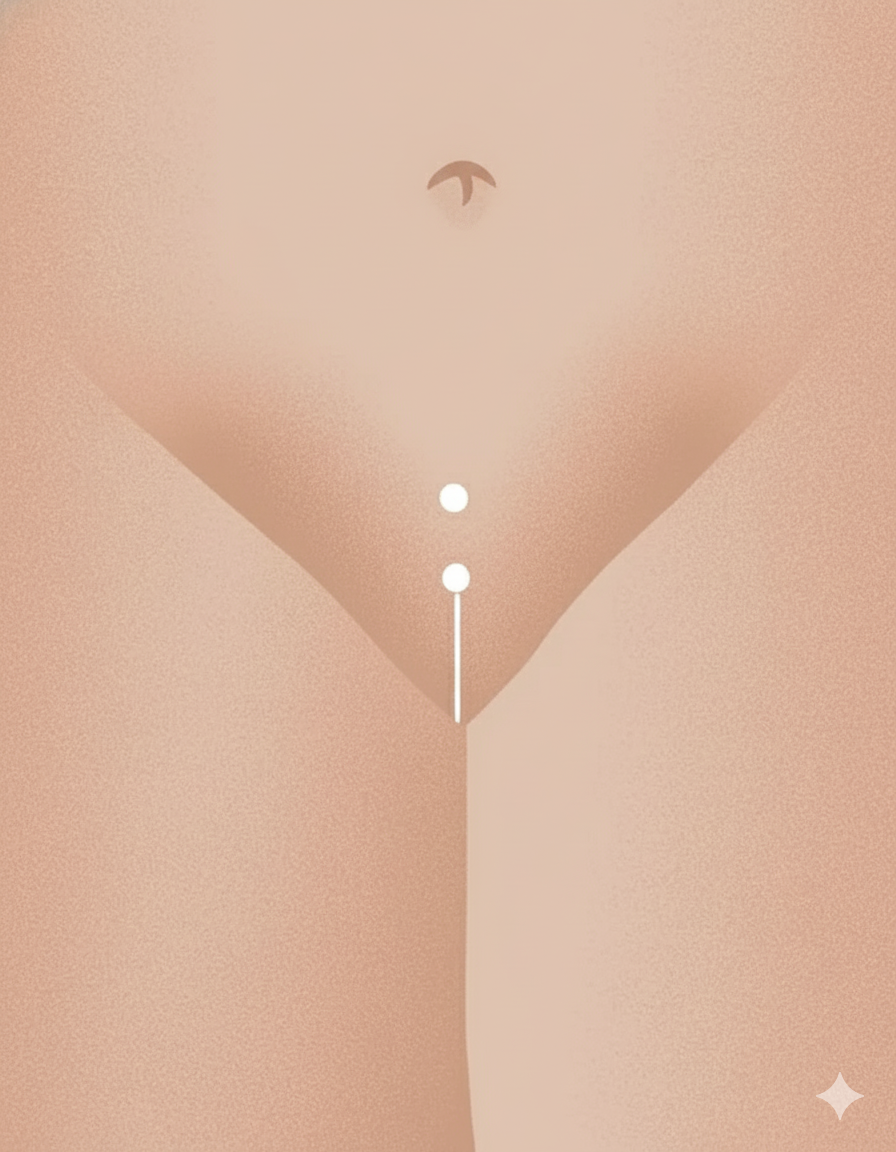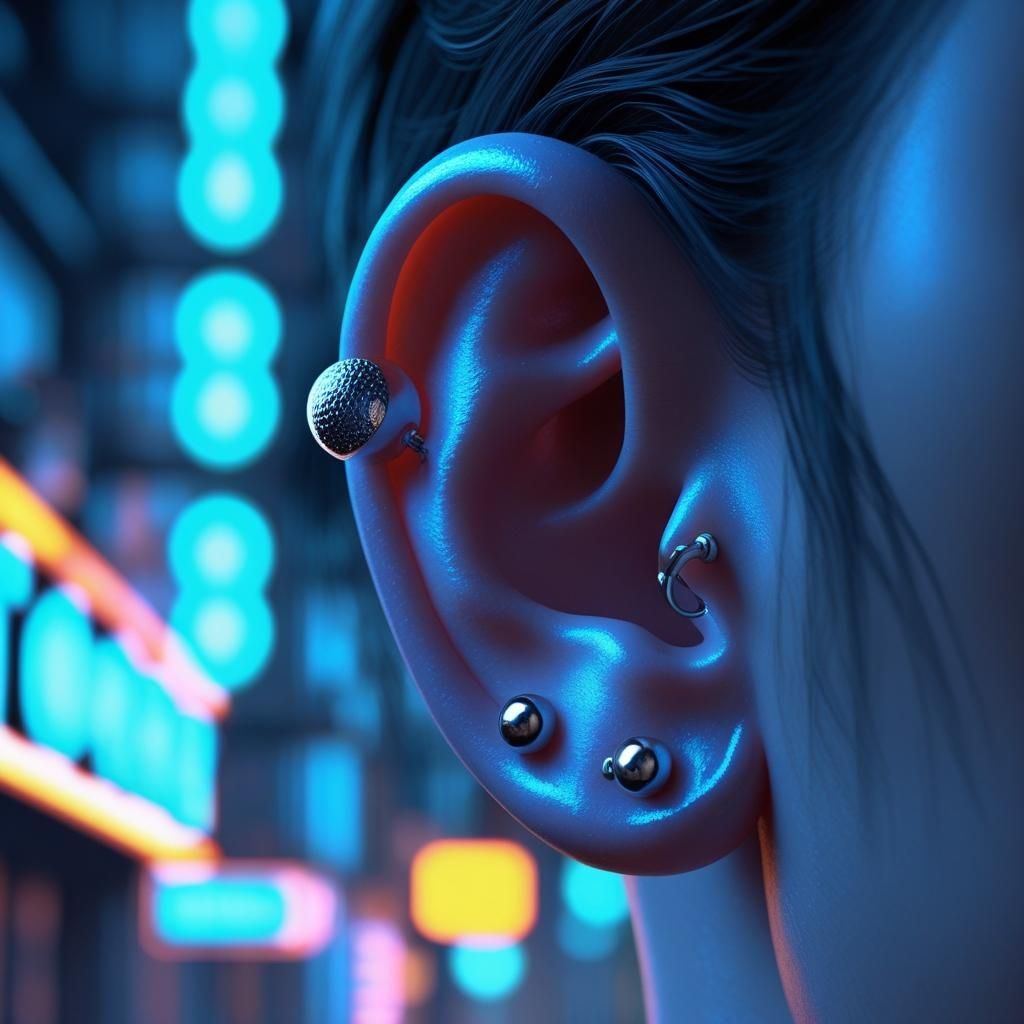Piercing Jewellery
Piercing jewellery has become an integral part of personal style and expression for many individuals. In cultures worldwide, body piercings have historic roots, often symbolising status, beauty, or rites of passage. Today, whether you're new to the world of body modifications or a seasoned enthusiast, selecting the right jewellery for your piercings is crucial for both aesthetic appeal and comfort. In this guide, we'll delve into the various types of piercing jewellery available, their specific uses, and how to choose the best options for your needs. The right choice can not only highlight your unique style but also ensure the health and longevity of your piercings.
Introduction to Piercing Jewellery
Body piercing has evolved significantly over the years, transitioning from a cultural practice to a mainstream form of self-expression. The type of jewellery you choose plays a pivotal role in the healing process, overall aesthetic, and your personal style. With a variety of materials, styles, and sizes available, understanding your options can enhance your piercing experience and ensure that your jewellery not only looks fantastic but also feels comfortable.
Today, the piercing industry is booming, with artists like Elayne Angel, author of "The Piercing Bible" , providing valuable insights into safe practices and trends. The right jewellery can make or break not only your look but also your health, as improper jewellery can lead to infections or prolonged healing times. The rise of professional piercing studios has made safe piercing more accessible, but the responsibility of choosing appropriate jewellery still lies with the wearer. This responsibility includes understanding the healing process, knowing the material properties of various jewellery options, and recognising the importance of proper fit.
Understanding Different Types of Piercing Jewellery
Ear Piercing Jewellery
Ear piercings are among the most popular body modifications, with a broad array of styles and jewellery options available. Each ear piercing type—helix, conch, rook, snug, tragus, daith, industrial, orbital, lobe, and cartilage—requires specific jewellery.
Helix Piercing Jewellery
For helix piercings, you can choose from a variety of jewellery types, including helix piercing studs, hoops, and flat-back labrets. Depending on your style, you might opt for double or triple helix piercing jewellery setups with multiple studs or hoops. Studies show that hoops can cause more movement-induced irritation, suggesting a preference for studs during initial healing. For a personalised touch, custom-made helix studs featuring birthstones or initials can add a unique element.
Conch Piercing Jewellery
Conch piercings can be adorned with studs or hoops and are available as inner or outer conch jewellery, offering versatility in styling. Gemstone-set hoops that catch the light beautifully are particularly popular. Consult with a professional piercer to determine the best size for your conch piercing jewellery, as improper sizing can lead to discomfort.
Rook Piercing Jewellery
Rook jewellery includes hoops and curved barbells, designed to fit the unique anatomy of the rook piercing. Due to its inner ear cartilage placement, high-quality, well-fitted jewellery is essential for comfort. Selecting a curved barbell with a secure closure prevents irritation or loss.
Snug Piercing Jewellery
Snug piercings can be complemented with barbells or hoops, keeping comfort in mind due to their tight fit. Custom-designed snug jewellery ensures the best fit for the ear’s natural curvature and helps avoid irritation during healing.
Tragus Piercing Jewellery
For tragus piercings, studs and hoops are popular choices. Choosing the correct size and material is vital for comfort and healing. Professionals recommend starting with a small stud to reduce the risk of snagging or irritation. Proper tragus jewellery enhances both comfort and style.
Daith Piercing Jewellery
Daith jewellery includes earrings, clicker rings, and heart hoops. These are often chosen for their aesthetic appeal and the rumoured benefits of alleviating migraines. While evidence is limited, many wearers appreciate daith piercing jewellery for its combination of style and potential wellness benefits.
Industrial Piercing Jewellery
Industrial piercings are fitted with barbells or chains, creating a bold and striking look across the ear. It’s essential to choose a barbell length that allows for initial swelling. High-quality industrial piercing jewellery minimises the risk of migration and rejection.
Orbital Piercing Jewellery
Orbital piercings use rings that pass through two piercings, connecting them with one piece of jewellery. The symmetry required means custom-fitted orbital jewellery is recommended to ensure comfort and balance.
Lobe Piercing Jewellery
Lobe piercings are classic and versatile, accommodating studs and hoops. Stacked lobe jewellery allows for a layered look. Mixing metals and textures creates a stylish curated ear effect.
Cartilage Piercing Jewellery
Cartilage piercings suit studs or hoops for a minimalist aesthetic. Because cartilage is denser, proper jewellery choice is essential to avoid irritation. Titanium or niobium cartilage piercing jewellery supports healthy healing.
Ear Cuffs and Retainers Jewellery
Non-pierced ear cuffs are ideal for those who want the look without commitment. Clear retainers maintain healed piercings discreetly. Ear cuff jewellery is perfect for experimenting with new styles.
Nose Piercing Jewellery
Nose piercings have been part of cultural expression for centuries, with jewellery like studs, hoops, and rings carrying different meanings.
Nose Piercing Studs and Hoops Jewellery
Available in gold, diamond, and seamless designs, these offer vast options for personal expression. High-polish or matte finishes add distinct aesthetics to nose piercing jewellery.
Septum Piercing Jewellery
Septum jewellery includes rings, clickers, and horseshoe-shaped barbells. Because of its central placement, septum piercing jewellery significantly affects facial symmetry and appearance.
Nostril Piercing Jewellery
Nostril jewellery options include nose screws, L-shape studs, and fishtail nose studs. When selecting nostril piercing jewellery, ensure the thickness and decorative size suit your anatomy for comfort and style.
Lip Piercing Jewellery
Labret Piercing Jewellery
Flat-back studs and curved barbells are common for labret piercings. The flat-back design reduces gum irritation. Properly sized labret jewellery ensures comfort and prevents pressure on the lips.
Hoops and Circular Barbells Jewellery
These are popular for Monroe, Madonna, and snake bite piercings. Carefully selected lip jewellery enhances your facial features and overall aesthetic.
Tongue Piercing Jewellery
Tongue Barbells Jewellery
Acrylic and PTFE barbells are designed for comfort and oral safety. Regular inspection of tongue piercing jewellery prevents damage to teeth and gums.
Snake Eyes and Venom Bites Jewellery
These require curved barbells designed for dual tongue piercings. Choosing the right snake eyes piercing jewellery is crucial for healing and comfort.
Eyebrow Piercing Jewellery
Curved Barbells and Hoops Jewellery
Eyebrow piercings look stylish with curved barbells or hoops. Selecting smaller gauges reduces migration and keeps eyebrow piercing jewellery subtle and sleek.
Anti-Eyebrow and Bridge Piercings Jewellery
These surface piercings use straight or curved barbells. Titanium or PTFE anti-eyebrow jewellery helps prevent rejection and irritation.
Belly Button Piercing Jewellery
Navel Curved Barbells Jewellery
Belly button piercings are most commonly adorned with banana bars or dangle rings. Navel piercing jewellery can easily transition from subtle to decorative styles.
Floating and Top-Down Navel Bars Jewellery
Floating and top-down designs offer alternative belly button jewellery options, chosen based on body type and comfort preferences.
Nipple Piercing Jewellery
Straight and Curved Barbells Jewellery
Nipple jewellery combines style with comfort. Biocompatible materials reduce irritation, ensuring safe and stylish nipple piercing jewellery.
Captive and Segment Rings Jewellery
These provide a secure and unique appearance. Properly measured nipple piercing jewellery ensures comfort without excess pressure.
Dermal and Surface Piercing Jewellery
Microdermal Anchors and Tops Jewellery
Single-point piercings use microdermal anchors. Choosing secure tops ensures safe and long-lasting dermal piercing jewellery.
Surface Bars and Curved Barbells Jewellery
Surface piercings across flat areas like the collarbone need flexible surface bar jewellery to adapt to body movement.
Genital Piercing Jewellery
Variety of Barbells and Rings Jewellery
Genital piercings, including apadravya and prince albert styles, require precision and safety. Selecting high-quality genital piercing jewellery ensures comfort and security.
Materials and Specifics of Piercing Jewellery
- Titanium and Implant-Grade Titanium (ASTM F136): Lightweight, corrosion-resistant, and biocompatible—ideal for sensitive skin.
- Gold (14k and 18k): Luxurious and safe when nickel-free. Higher karat gold is softer and requires care.
- Niobium: Hypoallergenic and colour-customisable; a durable, stylish choice.
- Surgical Steel: Affordable and durable. Ensure it’s implant-grade to avoid nickel sensitivity.
- Bioflex/PTFE: Flexible and ideal for oral or mobile piercings. Replace periodically to maintain comfort.
- Clear Retainers: Perfect for discretion in professional settings.
- Threaded and Threadless Options: Internally threaded jewellery allows smooth insertion and reduces tissue trauma.
Tips for Choosing Piercing Jewellery
- Consider the Healing Stage: Choose jewellery suited to your piercing’s healing phase. Simpler styles are best for new piercings, while healed ones can handle more decorative jewellery.
- Size Matters: Correct sizing prevents irritation or migration. Consult your piercer for advice on jewellery gauge and diameter.
- Material Sensitivity: Opt for hypoallergenic options like titanium or niobium.
- Style and Lifestyle: Pick jewellery that suits both your personality and your daily activities.
- Regular Maintenance: Clean your piercing jewellery routinely with sterile saline and inspect for tightness or wear.
- Consult Professionals: Experienced piercers can help choose the safest, most flattering piercing jewellery for your anatomy.
Summary
Piercing jewellery is not only a form of self-expression but also an essential part of maintaining healthy piercings. By understanding the different types of piercing jewellery, materials, and fit considerations, you can make informed choices that enhance both style and comfort. Always consult experienced piercers—like those at Impulse Bioworks & Piercing—for tailored advice and to ensure your jewellery choices are safe, suitable, and uniquely you.
